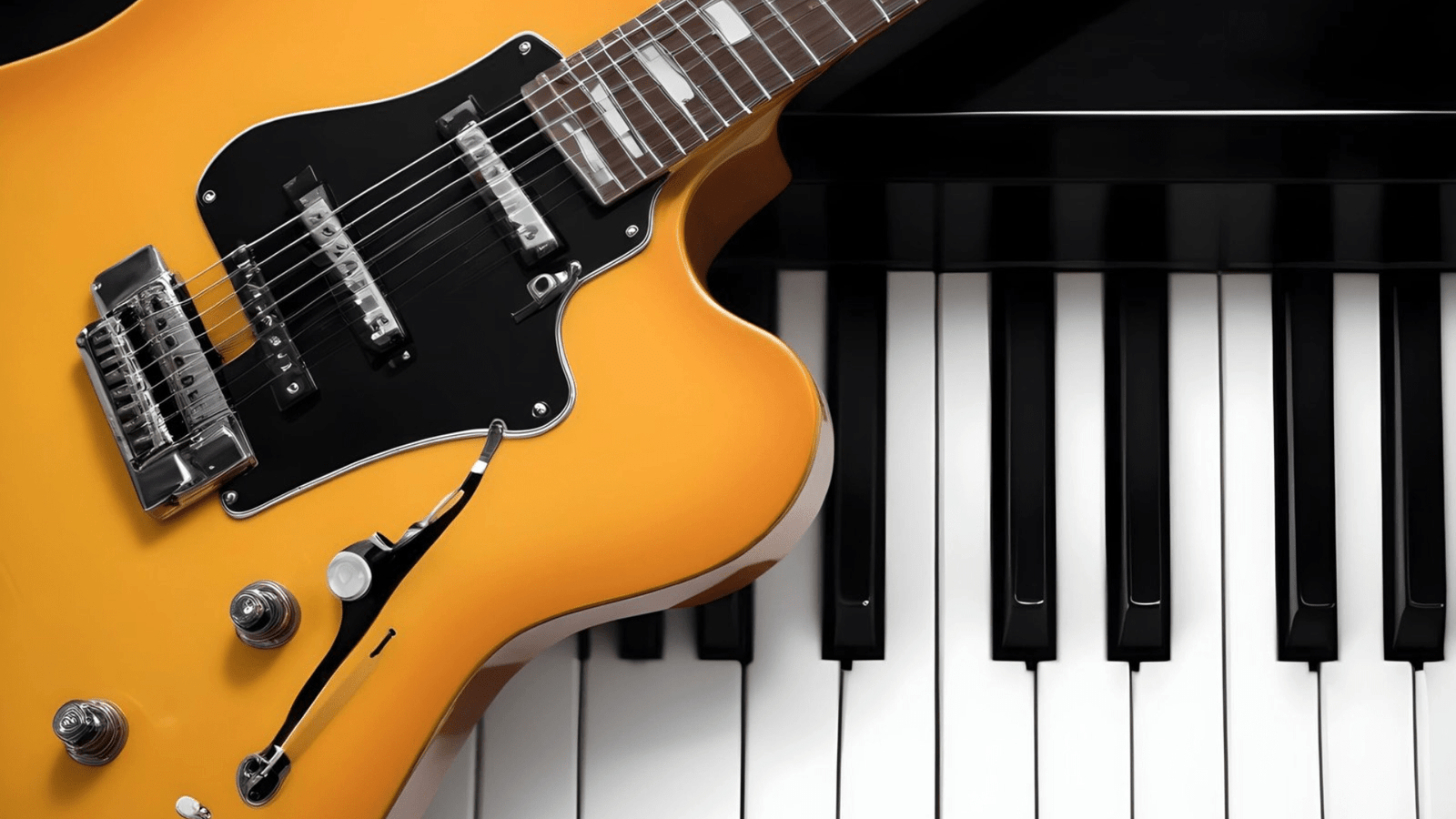Struggling to choose the right guitar for you? Whether you’re a pro or a newbie, it’s a common challenge. But don’t let it drown you! With countless options available in the market, it’s essential to make an informed decision. In this guide, we’ll walk you through the process of choosing the right guitar for you tailored to your preferences, skill level, and budget.
Consider Your Budget
Guitars come in a diverse range of prices, from budget-friendly options to luxurious models. Determine your budget range early on to narrow down your choices. Remember that a higher price tag doesn’t always guarantee better quality, especially for beginners. You can find excellent guitars within any budget range; it’s just a matter of prioritizing features and quality based on your financial constraints.
Choose Between Acoustic and Electric
One of the primary decisions you’ll need to make is whether to go for an acoustic or electric guitar. Acoustic guitars produce sound acoustically without the need for amplification, making them perfect for intimate settings or practicing without additional equipment. On the other hand, electric guitars require amplification and offer a broader range of tones and effects, making them ideal for performances and playing in bands. Consider which option aligns best with your musical goals and preferences.
While there exist an extensive array of variations, we simplify it for you by categorizing them into three primary types:
1. Classical Guitar (also known as Nylon String)
2. Acoustic Guitar (Steel String)
3. Electric Guitar
- Classical Guitars
Classical guitars are ideal for novice musicians, especially younger individuals, due to their affordability and ease of use. They are well-suited for fingerpicking techniques rather than strumming chords. While they may not produce as bright or loud of a sound as steel-string guitars, they offer a distinctive tone. Additionally, their nylon strings are thicker and gentler on the fingertips, making them more comfortable for beginners to play.
- Classical guitars are designed for classical and flamenco music.
- Explore our collection of classical guitars designed for beginners on our website.
- Acoustic Guitars
Steel string guitars offer a more robust build and a brighter, louder sound due to the steel strings, making them ideal for strumming chords. However, the sharpness of the steel strings may not be suitable for younger players who are just starting out. For beginners without calluses and finger strength, a classical guitar may be a better option for practice.
- Acoustic guitars are ideal for folk, country, and singer-songwriter styles.
- Check out our selection of acoustic guitars for beginners on our website :
- Types of Electrical Guitars
Solid Body Guitars
Solid body electric guitars are the most common kind and are loved for their flexibility and sturdiness. These guitars have a solid wooden body, usually crafted from materials such as alder, mahogany, or maple. The absence of resonant chambers in the body helps to minimize feedback and enhance sustain, which makes them perfect for high-gain music styles.
Here are some things that make these guitars stand out:
1. They offer a wide range of tones due to their different pickup setups.
2. They are perfect for playing rock, pop, blues, and metal music.
3. Some of the most famous models are the Fender Stratocaster and Gibson Les Paul.
Semi-Hollow Body Guitars
Semi-Hollow body guitars blend the best of both solid body and hollow body constructions. They utilize a solid block at the center to minimize feedback, along with hollow wings or f-holes to enrich the resonance. These guitars produce a delightful, harmonious sound and are widely embraced in the world of jazz, blues, and rock music.
Some of the main highlights are:
– Awesome sound that’s both rich and resonant, with a touch of acoustic goodness.
– Less likely to have that annoying feedback issue.
– Perfect for musicians who want a versatile instrument that can handle both clean and distorted tones.
Hollow Body Guitars
Hollow body guitars are built to be completely hollow, resulting in a rich and lively tone with distinct acoustic characteristics. They are particularly popular in jazz and blues genres due to their cozy and natural sound. Nonetheless, at high volumes, they may suffer from feedback issues.
Some of the key features are:
– Amazing sustain and rich, organic tones.
– Perfect for those clean, jazzy, and bluesy playing styles.
– Comes with a larger body size, unlike solid body and semi-hollow body guitars.
- Electric guitars are versatile and suitable for various genres, including rock, blues, jazz, and metal.
- Explore our collection of classical guitars designed for beginners on our website.
Pay Attention to Body Type and Size:
The size and shape of the guitar body can significantly impact your playing experience and comfort level. Acoustic guitars, for example, come in various body styles, including dreadnought, concert, and parlor, each offering different tonal characteristics and ergonomics. Electric guitars also come in different shapes, such as Stratocaster, Telecaster, and Les Paul, each with its unique feel and sound. Consider trying out different body styles to determine which one suits you best.
The thickness of a pick is usually referred to as the ‘gauge’ and is measured in millimeters.
Different manufacturers have their own definitions of what constitutes light or heavy.
For instance, here are D’Addario’s description:
Light (.50mm)
Medium (.70mm)
Heavy (1.0mm)
Extra Heavy (1.25mm).
You have plenty of options to experiment with when it comes to materials. Many companies provide detailed descriptions of the materials they use and the sounds they are associated with.
Here are a few examples:
– Celluloid
– Nylon
– Tortex
– Felt
– Wood
In terms of shape, apart from a thumb pick that can be slid over your thumb, your regular flatpick will typically have a triangular shape with rounded edges.
- Explore our collection of D’Addario guitar ranges for beginners on our website.
Try Before You Buy
Nothing beats the experience of trying out guitars in person. Pay attention to factors such as the neck shape, fretboard width, and overall playability. Visit the nearest local music store and try out different guitars to see which ones feel comfortable and sound good to you. Don’t hesitate to ask for assistance from the store staff or a knowledgeable friend who can provide guidance based on your preferences and skill level.
Seek Expert Advice:
If you’re unsure about which guitar to choose, don’t hesitate to seek advice from a store assistant or knowledgeable professional or experienced musician. They can offer valuable insights and recommendations based on your skill level, playing style, and musical preferences.
Please don’t hesitate to reach out to us via email, phone, or live chat if you need further details on choosing the right guitar for your needs.
CALL NOW



